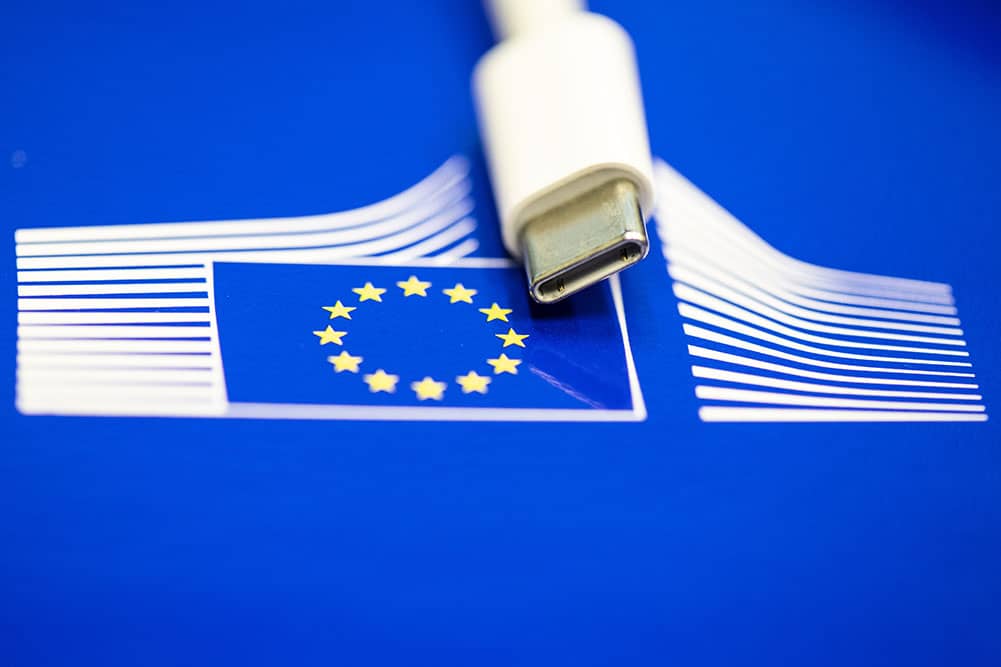MiCA to Drive Wider Crypto Adoption says deVere Group
- Written by: Gary Howes
-

Image: Lukasz Kobus, European Union.
The European Union's Markets in crypto-assets act (MiCA) has been welcomed as a "landmark moment" for cryptocurrencies by deVere Group.
The asset manager says the EU becomes the first continent with comprehensive regulation for crypto assets.
"In order for new coins to be approved in the EU, it must be ensured in future that their business model will not endanger our currency stability," says Nigel Green, CEO of deVere Group. "The new supervisory structures will also be a bulwark against Lehman Brothers moments like the crypto exchange FTX."
The call comes in the wake of two months of gains for the leading crypto coins as confidence returns to a sector shaken by U.S. regulatory crackdowns, industry failures and rising global interest rates.
deVere Group thinks crypto asset valuations can remain elevated as the EU provides welcome regulatory clarity for the industry and firms approved in one country can "passport" their operations into others.
"This is a landmark moment for crypto. It signals the maturing of the market and underscores that cryptocurrencies are now mainstream," says Green.
[Contextual Advertisement: Learn how some online casinos in Australia are integrating crypto payments].
deVere has been lobbying authorities on this issue as greater regulatory scrutiny is needed as digital currencies, including Bitcoin and Ether, are set to play an ever-greater role in the international financial system.
The asset manager says the industry requires a strong regulatory framework to be established and approved at an international level.
Green says with clear and consistent legislation in place, investors will have "more confidence in the market and feel more secure" in their investments.
"This will further attract more institutional investors who bring with them huge levels of capital, experience and influence, which can help increase demand and drive up prices in the long term," he adds.
deVere Group says regulation can help improve the wider reputation of the industry and increase mass adoption.
MiCA is expected to be in force from next year.
Officials in the UK meanwhile say regulation could be implemented within a year.
"The US and UK now have the opportunity to catch up with the EU on crypto regulation, which they inevitably will do – and probably sooner than many expect," says Green.
MiCA is the EU regulation governing issuance and provision of services related to cryptoassets and stablecoins.
Adopted on April 20, 2023, by the European Parliament, MiCA is the first and only legislation of its kind in the world and analysts at BBVA bank say it leads the way for other jurisdictions.
MiCA defines a crypto-asset as "a digital representation of value or rights which may be transferred and stored electronically, using distributed ledger technology or similar technology."
The Regulation draws a distinction between 'cryptocurrencies' on one hand and 'tokens' on the other.
It also sets requirements for cryptoasset issuers and cryptoasset service providers (CASPs) which must provide complete and transparent information about the cryptoassets they issue, and comply with disclosure and transparency rules.
"MiCA is a pioneering legislative text in terms of regulating crypto markets. It undoubtedly places the European Union as a global pace-setter. We should also be well aware that crypto markets are multi-jurisdictional. Regulatory efforts similar to MiCA in the rest of jurisdictions would contribute to the creation of a safe, robust and necessary ecosystem for cryptoasset markets globally," says María José Escribano, a member of BBVA's Digital Regulation team.
Green says the legislation will protect investors, tackle cryptocurrency criminality, and reduce the potential possibility of disrupting global financial stability, as well as offering a potential long-term economic boost to those jurisdictions which introduce it.
"Digital is the inevitable future of finance. Therefore, the proactive, forward-thinking work being done by central banks and governments, among others, in this area must be championed," says Green.
Looking into some specifics, the main cryptoassets covered by MiCA are:
1. Asset-referenced tokens (ARTs):
This is a type of crypto-asset that purports to maintain a stable value by referring to the value of several fiat currencies that are legal tender, one or several commodities or one or several crypto-assets, or a combination of such assets, explains BBVA's Escribano.
This category includes all cryptoassets that do not qualify as 'electronic money tokens,' which purport to maintain a stable value by referring to the value of a fiat currency that is legal tender. An example of this is Digix (DGX), backed by an equivalent amount of physical gold stored in a secure vault.
2. Electronic money tokens (EMT):
These purport to maintain a stable value by referring to the value of a fiat currency that is legal tender.
"The difference between ARTs and EMTs is the configuration of the underlying asset that supports the price. ARTs use non-cash assets or a basket of currencies, while EMTs use a single currency, which brings them closer to the concept of electronic money," says Escribano.
3. Cryptoassets that are not considered ARTs or EMTs, such as ‘utility tokens,’ which are intended to provide digital access to a good or service, available on DLT, and are only accepted by the issuer of that token.
"Unlike security-type tokens, they are not considered a financial instrument under the securities laws of many countries," explains Escribano.




